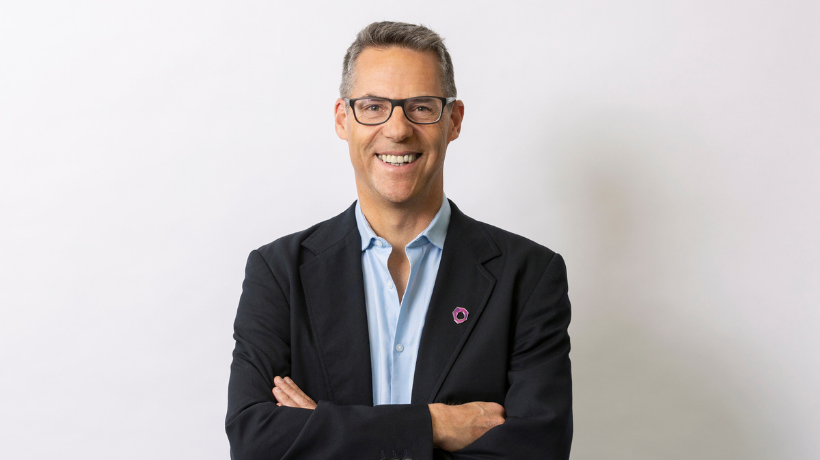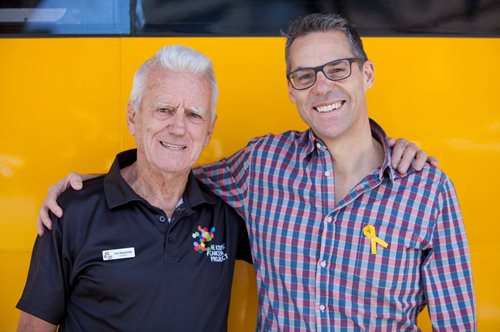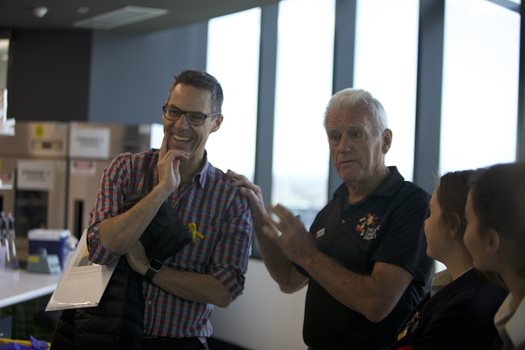Behind the science: Hitting cancer where it hurts

While various forms of leukaemia have seen their survival rates blossoming thanks to powerful research, others are harder to treat. But researchers are gradually discovering their weak spots.
In the group of blood cancers known collectively as acute myeloid leukaemia, or AML, there is a specific version that is not easily treated. It’s driven by a mutation of a particular gene called FLT3.
Cancers with these FLT3 mutations are fuelled by an amino acid called ‘serine’. These specific cancer cells are metabolically wired to require high rates of serine to thrive and grow. They take serine from the blood and, most interestingly, they also produce their own serine. Professor Ricky Johnstone, Executive Director of Cancer Research at the Peter MacCallum Cancer Centre and Head of the Sir Peter MacCallum Department of Oncology at The University of Melbourne explains:
We don’t know how to treat this particular type of AML effectively, so children who have leukaemia with a FLT3 mutation do not do well.
Johnstone, who has been deeply involved in cancer research since 1990, heads an army of 700 researchers at Peter Mac. They represent our front line in the battle against numerous types of cancer.
This funding provided by The Kids Cancer Project will allow us to follow up our exciting discovery that certain leukaemias are reliant on serine metabolism, an Achilles heel for these tumours.
- Ricky Johnstone

Regarding research partly funded by The Kids' Cancer Project, Johnstone explains:
We propose the best way to get better treatments is to understand how this mutation and this FLT3 gene causes these cancers on a biological level...So that’s what my lab did.
We worked out that AML with this FLT3 mutation has an Achilles heel. That is the fact that it needs serine. If we block that process, the cancer cells don’t like it. They stop proliferation so quickly and they can die.
Removing the fuel from the cancer’s engine
Funding from The Kids’ Cancer Project is now enabling the next, two-year part of the research process. That work is all about the pre-clinical testing of drugs to figure out the most effective way to remove the ability of the cancer cells to produce their own serine, and therefore to starve them.
There is a drug, but it’s a pre-clinical drug that we call a tool compound. We can use it in the lab but not in humans.
- Ricky Johnstone
The main part of the grant will fund pre-clinical testing of this tool compound. The hope is that we can work with pharma companies or other academic groups to develop even better drugs that stop the cells’ ability to produce and use serine.
If this part of the process is a success, the next likely step is clinical trial.
Research innovation is made possible by funding
Having worked in cancer research for over three decades, Johnstone has seen massive change in treatments, survival rates, and quality of life for survivors driven in part by advances in technology.
The way I explain it is to think about what your phone looked like in 1990 – it was probably a fixed landline...Then there were the first, greyscale Nokias that were a little clunky. Then things began to accelerate and now we have powerful computers in our pockets.
That same advancement has occurred in biomedical sciences and it all comes from research and technology development. It’s really around our understanding of the genome.

But while it’s one thing to have a great technological tool, it’s another to have people with bright ideas who can think of brilliant ways to use it.
- Ricky Johnstone
That’s the research workforce and the students, and that’s what funding enables.
Where to next, then? One innovation is the use of targeted agents to kill cancer cells, rather than more general treatments such as chemotherapy. Why damage the entire lawn, Johnstone says, when you just want to kill a few weeds.
The other is helping the body’s immune system to fight back against the cancer, using what’s known as ‘immunotherapy’.
I think a multi-pronged approach where we’re using targeted therapies in a personalised way, as well as immunotherapies, is going to be the way forward...The future of kids’ cancer treatment is going to be very different.

